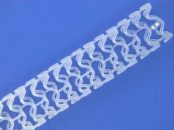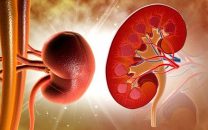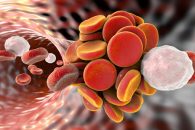Coronary angiography is essential for patients admitted with non-ST-elevation acute coronary syndrome, since it allows physicians to confirm the diagnosis, stratify the risk, and define the revascularization and antithrombotic management strategies. There is no doubt that these patients should be studied invasively, but the timing for that is still uncertain. Coronary catheterization within…
With Absorb Out, New Resorbable Scaffolds Have Come onto the Market
By restoring vascular physiology and eliminating the inflammatory focus and the chance of fracture and neo atherosclerosis inherent to DES, bioresorbable scaffolds offer the potential to improve long term outcomes. A number of bioresorbable materials have been tested, mainly polylactic acid, with several limitations that have taken the Absorb bioresorbable scaffold out of the market.…
Frequency and Evolution of Cardiac Perforation in Patients with a History of MRS
Courtesy of Dr. Carlos Fava. Coronary perforation (CP) is a very uncommon event (≈0.4%), associated with severe complications that entail risk of death. It has usually been related to patients with a history of myocardial revascularization surgery (MRS). However, this group usually presents lower rates of cardiac tamponade due to pericardial fibrosis caused by surgery. This…
Endarterectomy vs. Stenting in Asymptomatic Carotid Artery Stenosis
The comparative efficacy and safety of carotid stenting vs. endarterectomy in asymptomatic carotid stenosis patients remains controversial and, what is worse, consensus seems unlikely in the near future. Given the lack of definite evidence, several meta-analyzis and systematic reviews have been produced in an attempt to shed some light on this matter. This study included all…
New Strategies for the Femoropopliteal Artery
Courtesy of Dr. Carlos Fava. The incidence of peripheral vascular disease is clearly increasing, progressing towards critical ischemic claudication and amputation. Angioplasty is currently the treatment of choice for these pathologies. Several times, an implanted stent ends up cracking due to extensive calcification, increasing the rate of restenosis and worsening critical ischemia. Technological development on drug-eluting…
Diabetics’ Silent Ischemia Myth Busted
Diabetes mellitus patients generally present more diffuse coronary disease, faster lesion progression and higher risk of restenosis after PCI. The way these anatomical differences translate into in a different clinical practice, compared to non-diabetic patients, remains unclear. Prior studies comparing the frequency of angina symptoms in diabetic vs. non-diabetic patients have arrived to contradicting outcomes,…
It Is a Fact: Cerebral Protection in TAVR Has Proved to Reduce Stroke and Death
Cerebral ischemic events after transcatheter aortic valve replacement (TAVR) have been identified as independent predictors of morbidity and mortality. New-generation devices have managed to partially reduce the rate of cerebral events, but it still is around 5.5% at 30 days for patients undergoing TAVR through transfemoral access. First data on cerebral protection devices had only shown…
These Are the Thrombosis Predictors for Absorb Bioresorbable Scaffolds
J Am Coll Cardiol Intv has recently published a special issue on bioresorbable scaffolds. Abbott’s decision to pull Absorb off the market probably prompted the fast publishing of all related articles sent to the journal. Bioresorbable scaffolds were developed in hopes that they would reduce the rates of events per year 1 year post-implantation by 1.5%-3%…
A New Opportunity for Renal Denervation
Courtesy of dr. Carlos Fava. At first, renal denervation enjoyed a considerable boost because, according to early studies, it lowered blood pressure (BP). However, after the results of the SYMPLICITY HTN 3 Trial its popularity decreased. Currently, the development of new technologies and greater operator experience may facilitate a change in this scenario. This…
Very Late Thrombosis in Bioresorbable Scaffolds
The presence of a metallic device interrupts normal laminar flow and creates an artery environment that favors thrombosis, leaving the vessel vulnerable to very late thrombosis. Dual antiplatelet therapy, a better implantation technique, and several improvements in new drug-eluting stents (DES) (thinner struts, and higher polymer stability and biocompatibility) have lowered significantly the incidence of…









